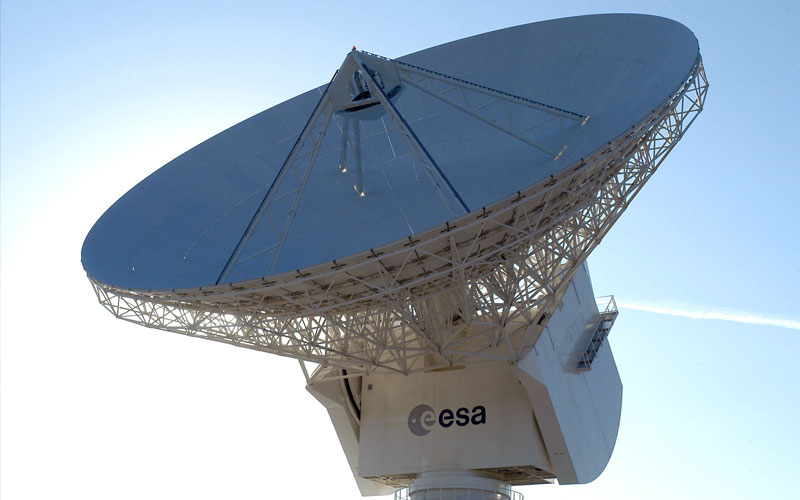
The European Space Agency’s deep-space communications station in Spain has been upgraded, boosting its download capacity.
Deep space networks are facing an unprecedented demand for communication bandwidth from space agencies around the world and, increasingly, from private companies. One of the ways that ESA is working to meet this demand is by adding a fourth deep-space antenna to its Estrack network. This new antenna is being built 140 kilometres north of Perth in Australia. Construction began in 2022, and the new antenna is expected to come online in early 2025. It will be the agency’s second deep-space antenna in Australia, and its construction is being supported by the Australian Space Agency.
In addition to building a new antenna, the agency is also increasing its deep-space bandwidth by squeezing every bit of performance from its three existing 35-metre deep-space antennas in Norcia (Australia), Cebreros (Spain), and Malargüe (Argentina) through a series of upgrades.
The antenna in Spain was the first to receive an upgrade that involved the antenna feed connecting the physical Ka-band antenna to the station’s electronic signal transmitter and receiver being cooled to 10 degrees above absolute zero (about -263°C). The cyrocooling reduces background interference that would otherwise limit the sensitivity and data transfer rate of the antenna.
“With these upgrades, ESA is pushing the limits of what’s technically possible and enabling scientists to explore new worlds and gather unprecedented amounts of data,” says Stéphane Halté, ESA ground station engineer.
According to ESA, the upgrade will allow for an 80-percent increase in the download capacity of the antenna for deep-space missions like Juice and BepiColombo.
This is not the first time ESA’s three deep-space antennas have received a cryocooled upgrade. In May 2021, an initial upgrade of the antenna in Spain was completed. This upgrade boosted the antenna’s performance by approximately 40 percent. The most recent development saw the upgrade applied across higher frequency bands, pushing up the performance gain to 80 percent.
Update: This article was updated to include the previous round of cyrocooled upgrades the three ESA deep space antennae received.







